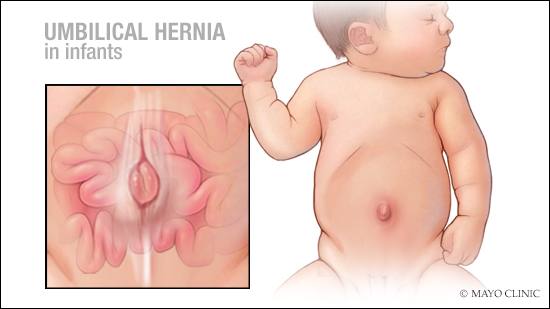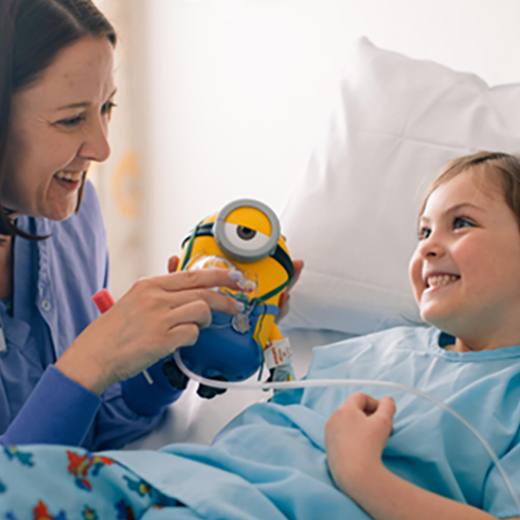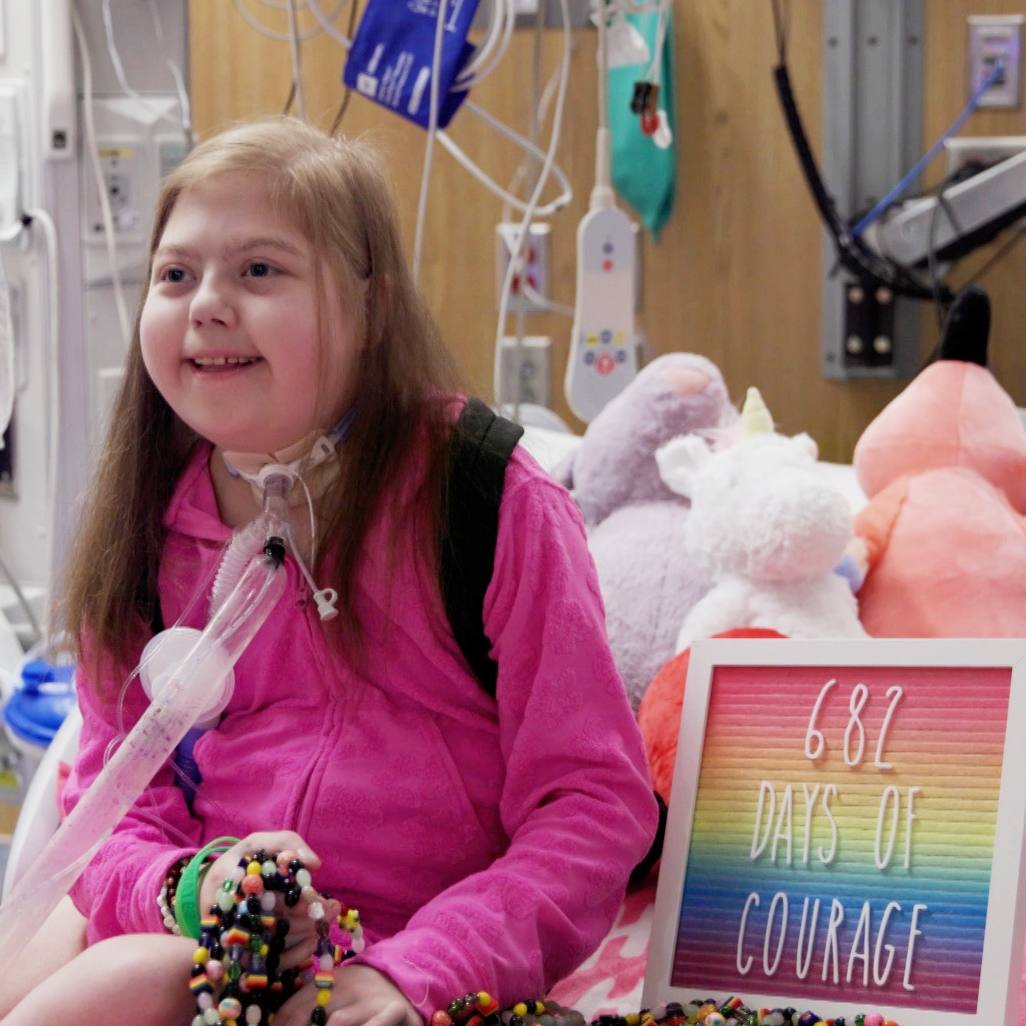-
Mayo Clinic Children's
Ask the Mayo Mom: Treating hernias in children

A hernia occurs when a part of the intestine pushes through a weak spot in the stomach muscles. A hernia creates a soft lump or bulge under the skin.
In children, hernias usually occur in one of two places:
- An inguinal hernia occurs in the groin area.
- An umbilical hernia occurs near the belly button.
Inguinal hernias in newborns and children result from a weakness in the abdominal wall that's present at birth. Sometimes the hernia will be visible only when an infant is crying, coughing or straining during a bowel movement.
An inguinal hernia isn't necessarily dangerous, but surgery may be recommended to fix an inguinal hernia that's painful or enlarging. Inguinal hernia repair is a common surgical procedure and can be performed as an open or minimally invasive procedure.
Umbilical hernias are most common in infants, but they can affect adults as well. In an infant, an umbilical hernia may be especially evident when the infant cries, causing the bellybutton to protrude. This is a classic sign of an umbilical hernia.
Children's umbilical hernias often close on their own in the first two years of life, though some remain open into the fifth year or longer. Umbilical hernias that appear during adulthood are more likely to need surgical repair.
On this edition of the Mayo Clinic Q&A podcast, Dr. Angela Mattke, a Mayo Clinic pediatrician and host of "Ask the Mayo Mom," discusses treating hernias in children with Dr. Stephanie Polites, a pediatric surgeon in the Mayo Clinic Children’s Center.
For more information and all your COVID-19 coverage, go to the Mayo Clinic News Network and mayoclinic.org.

Related Articles







